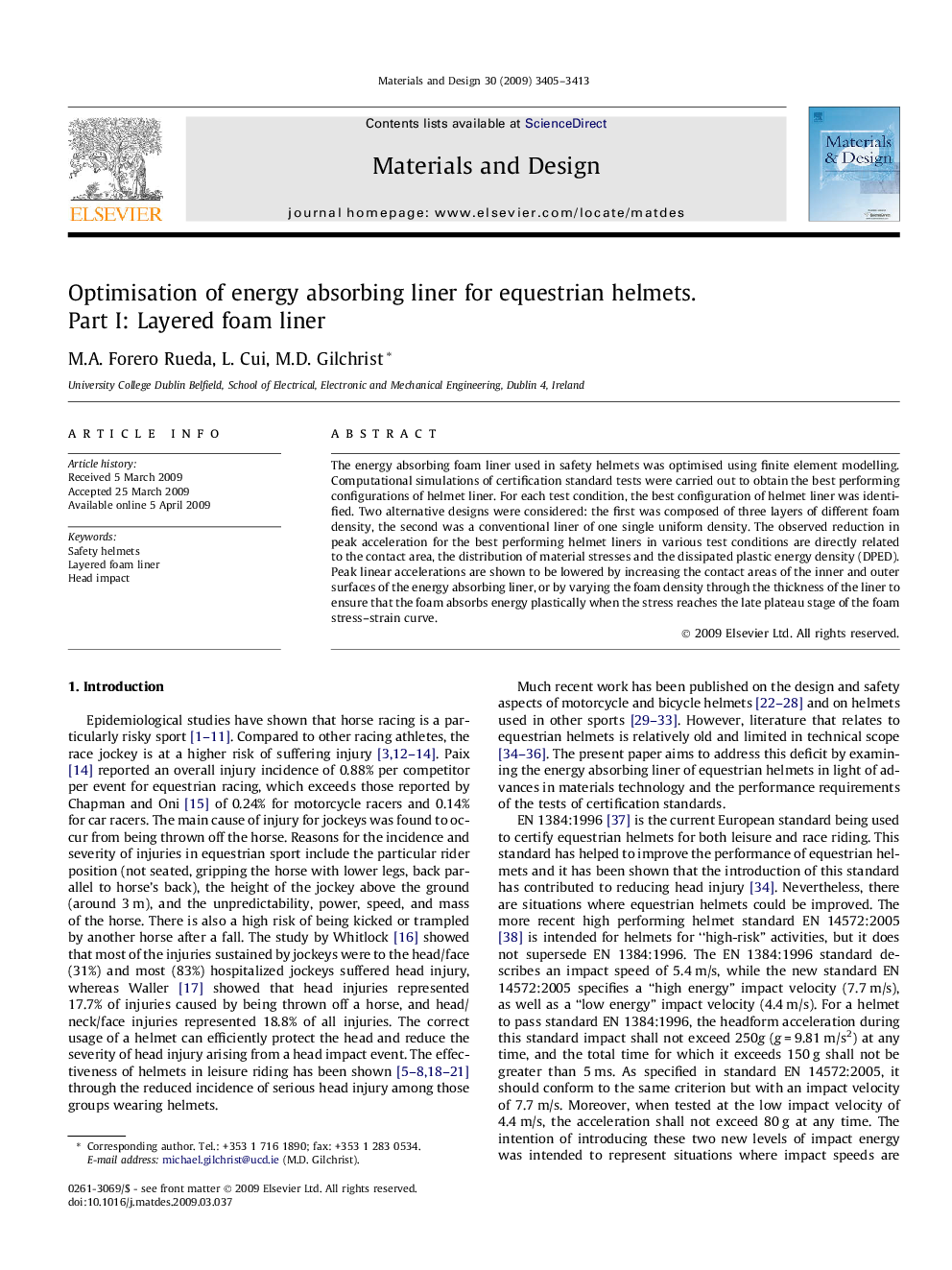| Article ID | Journal | Published Year | Pages | File Type |
|---|---|---|---|---|
| 832625 | Materials & Design (1980-2015) | 2009 | 9 Pages |
The energy absorbing foam liner used in safety helmets was optimised using finite element modelling. Computational simulations of certification standard tests were carried out to obtain the best performing configurations of helmet liner. For each test condition, the best configuration of helmet liner was identified. Two alternative designs were considered: the first was composed of three layers of different foam density, the second was a conventional liner of one single uniform density. The observed reduction in peak acceleration for the best performing helmet liners in various test conditions are directly related to the contact area, the distribution of material stresses and the dissipated plastic energy density (DPED). Peak linear accelerations are shown to be lowered by increasing the contact areas of the inner and outer surfaces of the energy absorbing liner, or by varying the foam density through the thickness of the liner to ensure that the foam absorbs energy plastically when the stress reaches the late plateau stage of the foam stress–strain curve.
